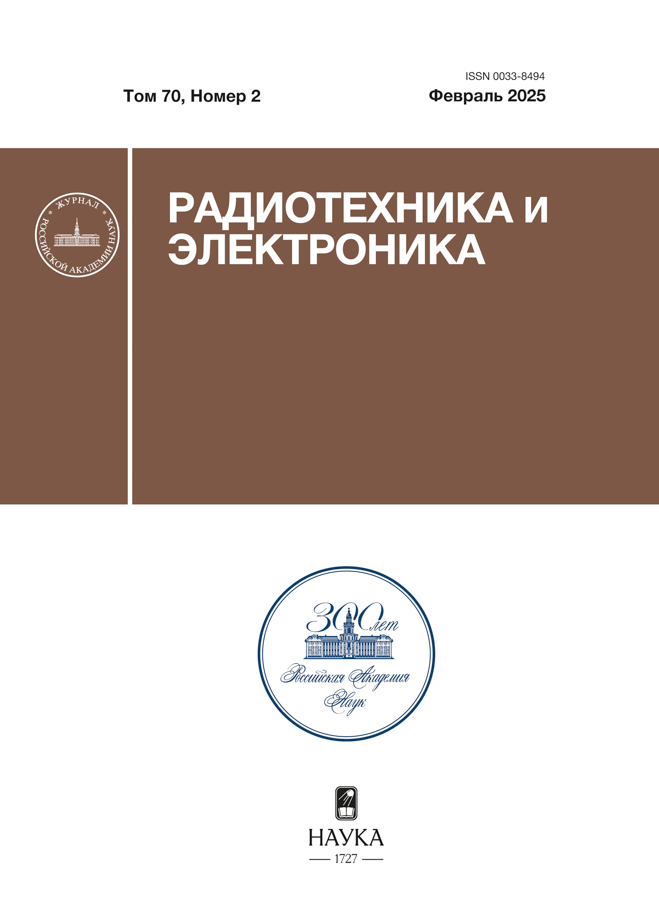Factors that reduce the duration of picosecond stimulated emission of the AlxGa1–xAs–GaAs–AlxGa1–xAs heterostructure
- Autores: Ageeva N.N.1, Bronevoi I.L.1, Krivonosov A.N.1
-
Afiliações:
- Kotel’nikov Institute of Radioengineering and Electronics RAS
- Edição: Volume 70, Nº 2 (2025)
- Páginas: 165-175
- Seção: PHYSICAL PROCESSES IN ELECTRONIC DEVICES
- URL: https://cijournal.ru/0033-8494/article/view/685046
- DOI: https://doi.org/10.31857/S0033849425020071
- EDN: https://elibrary.ru/GLYCJG
- ID: 685046
Citar
Texto integral
Resumo
New experimental data have been obtained indicating the following two reasons for the previously discovered significant decrease in the duration of the intrinsic picosecond emission of the AlxGa1–xAs–GaAs–AlxGa1–xAs heterostructure emerging from its end in a preferred direction: 1) the emission reflected from the end returning to the active region takes up a significant portion of the population inversion energy that would otherwise be spent on generating emission moving toward the end; 2) the resulting inhomogeneities in the reflected emission caused such a switching of the states of the multistable photonic crystal induced in the heterostructure by its emission that the forbidden zone for the emission emerging from the end in a preferred direction grew, and the emission trajectories changed in the heterostructure and, as a consequence, in the air space.
Texto integral
Sobre autores
N. Ageeva
Kotel’nikov Institute of Radioengineering and Electronics RAS
Email: bil@cplire.ru
Rússia, Mokhovaya Srt., 11, build. 7, Moscow, 125009
I. Bronevoi
Kotel’nikov Institute of Radioengineering and Electronics RAS
Autor responsável pela correspondência
Email: bil@cplire.ru
Rússia, Mokhovaya Srt., 11, build. 7, Moscow, 125009
A. Krivonosov
Kotel’nikov Institute of Radioengineering and Electronics RAS
Email: bil@cplire.ru
Rússia, Mokhovaya Srt., 11, build. 7, Moscow, 125009
Bibliografia
- Ageeva N.N., Bronevoi I.L., Kumekov S.E. et al. // Proc. SPIE. 1992. V. 1842. P. 70.
- Aгеева Н.Н., Броневой И.Л., Кривоносов А.Н. // ЖЭТФ. 2022. Т. 162. № 6. С. 1018.
- Aгеева Н.Н., Броневой И.Л., Кривоносов А.Н. // РЭ. 2023. Т. 68. № 3. С. 211.
- Aгеева Н.Н., Броневой И.Л., Кривоносов А.Н. // РЭ. 2024. Т. 69. № 2. С. 187.
- Aгеева Н.Н., Броневой И.Л., Кривоносов А.Н. // РЭ. 2024. Т. 69. № 7. С. 52.
- Aгеева Н.Н., Броневой И.Л., Кривоносов А.Н. // РЭ. 2025. Т. 70. № 1. С. 63.
- Агеева Н.Н., Броневой И.Л., Кривоносов А.Н. и др. // ФТП. 2020. Т. 54. № 10. С. 1018.
- Агеева Н.Н., Броневой И.Л., Кривоносов А.Н. и др. // ФТП. 2002. Т. 36. № 2. С. 144.
- Агеева Н.Н., Броневой И.Л., Кривоносов А.Н. и др. // ЖЭТФ. 2013. Т. 144. № 2. С. 227.
- Bозианова А.В., Ходзицкий М.К. // Нанофотоника. Часть 1. СПб: НИУ ИТМО, 2013.
- Агеева Н.Н., Броневой И.Л., Кривоносов А.Н. и др. // ЖЭТФ. 2013. Т. 143. № 4. С. 634.
Arquivos suplementares



















